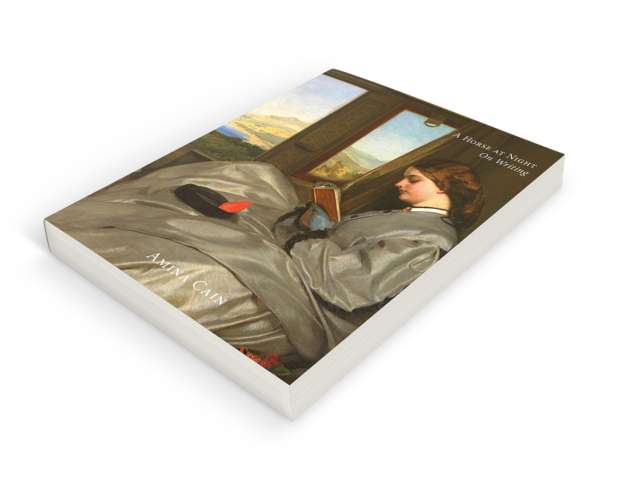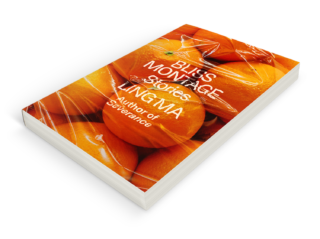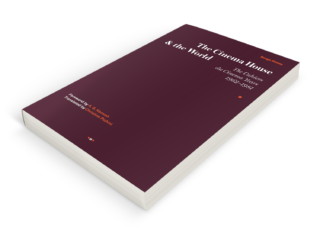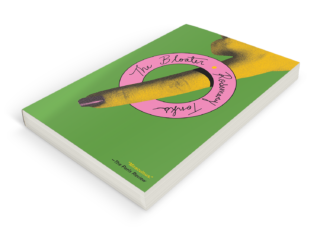Book Review Online
Private Moments of Obscure Pleasure
On Amina Cain's A Horse at Night.
By Sophie Brown

A Horse at Night: On Writing
Amina Cain
Dorothy, 136 pp.
In The Beaches of Agnès, Agnès Varda says “If we opened people up, we’d find landscapes. If we opened me up, we’d find beaches.” As a filmmaker, Varda worked toward bridging the borders between fiction and documentary, creating a form of hybrid that holds different resonances of truth. This tender merging is echoed in Amina Cain’s first nonfiction book, A Horse at Night, as are the beaches. There are superimposed beaches from Cain’s past and future, and from the fictions of Marguerite Duras and Elena Ferrante, among others. “For better or for worse,” writes Cain, I have always combined one place with another, lived in one landscape while dreaming of another.” The spaces evoked by writers, the memories of beloved characters, their feelings and impulses, reside dynamically in Cain’s imagination. Fictional figures have a presence in Cain’s perception as real as nonfictional friends — they are all here, in conversation with her daily habits.
Slender and essayistic, A Horse at Night roams through the literature and visual art in Cain’s subconscious, from the words of Virginia Woolf, Rachel Cusk and Toni Morrison to filmmakers including Chantal Akerman and David Lynch. Fragments of moving image, performance art, paintings, etchings, and prints materialize and dissipate, and a dialogue between these impressions opens up like a portal of ambiences, coming into focus yet remaining out of grasp. “In my own fiction, I sometimes find myself trying to conjure something that isn’t there, so that it both is and isn’t appearing,” she writes. This is also true of her nonfiction. In some ways this book functions as a gallery of interiority, deep and fluctuating with nebular dispositions and impulses. It is an effort towards articulating the intangible.
A Horse at Night is a transmutation of fiction and nonfiction, a form of unfurling, soft and grainy at the edges. Moving through this text feels like resting your eyes on shifting shapes on a walk in the dusk. In the chapter “Coming back from near sleep, a painting,” Cain moves through different observations of time and shape: how the light changes through the day and what it means for her walks, how time can mean different things at once. She recalls visiting Christian Marclay’s The Clock, an art installation whose center is a twenty-four hour looping montage sourced from over a thousand movies. Each minute is marked by a film scene showing that particular minute on a clock or watch. “I was in the theater from 10:30pm to 12:30am,” Cain writes, “and was fascinated by the juxtapositions of scenes of them getting ready to go out, or already out and creeping around a building. At night, some people wind down, others are winding up.” This train of thought carries us into Virginia Woolf’s The Waves, where the character Jinny is enjoying a night out and is struck by the contrasting rhythms of existing, waking, and sleeping. The beacons of human life seeking security stand out in their solitude; chimney pots against the sky and streetlights burning into the quiet emptiness. “Think of how nice a desert is in the evening, when even a cactus can look soft,” reflects Cain, in a passage that addresses her experiences of a depression. She moves with an illuminating ease between personal observation, art criticism, and fragments of memoir.
Cain introduces the reader to the landscapes of her own mind; “I have always carried warmth into the cold.” She writes into the tension between hostile environments and soothing anchors, moments that hover between jeopardy and safety, like a fire on an iced-over river in Helen Humphrey’s The Frozen Thames. There is a sensory logic to the way Cain forms her narratives, so precise at points it feels like ASMR, which isn’t surprising given ASMR’s proximity to meditation and Cain’s passion for Zazen. She shares how she came to Zazen and writing at the same time, and touches on what the Soto Zen Buddhism chants enable her to access; “I feel they open something in me that nothing else does, illuminating not just my time in meditation, but my sense of reality.”
“To be in a warm bath and exposed to a storm at the same time” she writes, speaking of the image she loves in Claire-Louise Bennett’s Pond. Cain evokes this particular kind of submergence as an image of reading, of the power of literature to exist as mood, and how art spills into inner life, remaining in conversation with cognition. Through these shades of being and channels of sensation, Cain summons a form of sensory osmosis. On a molecular level, everything is everywhere, and mimesis of atmospheres echo between animal, plant and place. There is an element of quantum mechanics in Cain’s words. She imagines meeting points, soft places of transmutation, such as the sound of waves and the feel of hot sand “coming together with the book” that she’s reading. She considers her experiences of being present and absent with friends on a beach in Malibu, dreaming of beaches in Costa Rica and Martinique, projecting books onto the horizon, seeing herself reflected back in the vast expanse of the water, much like Ferrante’s protagonist Leda in The Lost Daughter, or Cain’s own narrator in Indelicacy. It’s a meditative tuning into the sensual experience of being, possibly in multiple places at once; a porous present that has a synesthetic fluidity.
The contours of her vision develop like film, suggesting the feel of the moment. Cinematic and scenic, Cain wonders in double-meanings “If I lived differently, would different aspects of myself come to the foreground?” Her prose evokes the textures of visual art in the way it sustains tension and ambiguity. In her fiction, too, background is foreground: an oil lamp flickers inside a window during a thunderstorm (the warmth in the cold), a list of objects in the room, a sentence that simply reads “This scene is longer than it seems.” As with mis-en- scène in cinema, or the composition of a painting, an object is rarely there by accident, yet its significance is unfixed. Through time and attention, Cain shows how other things appear, although they might not be visible.
Heightened experiences often manifest in domestic spaces, and wrestle just below the surface. Cain illuminates one in Clarice Lispector’s The Hour of the Star; the character of Macabéa is “nourished by her daydreams” and steps away from the desk in her office to experience quiet moments of euphoria alone in a bathroom. Like a figure in an Edward Hopper painting, Cain takes pleasure in isolated pauses, private moments of obscure pleasure. In her earlier fictions, Creature and Indelicacy, Cain reveals urges that reverberate into this latest work; narrators deep in dialogue with their own desires. We encounter characters with a peculiar edge, who vacillate between a curious questioning, and terse impulses with a touch of violence – perhaps with an echo of the erotic force she admires in Annie Ernaux, whose sentence structures mimic the ferocious obsession they hold. Cain dips into the idiosyncrasies and thought streams of the self that border on the absurd: “I want a bathing suit” announces the protagonist’s friend in Indelicacy one evening as the two are walking by a lake. “I don’t like to hear a person’s voice during this kind of moment,” the narrator thinks.
Occasionally, Cain’s sentences peter out with an idiosyncratic wittering, what seems like a red herring in her own prose, an aside. Cain’s writing is so precise I wonder if this is one of the places she hides things, as when she adds a final element to the fact she’d re-read a Ferrante novel in her late forties: “The first time had been a few years before that.” It appears to be a throwaway detail, but for Cain it is the detail that lodges. Or perhaps this is part of her hunt for authenticity, her serious searching for the selves that get edited out, and remain unseen in the shadows. Cain considers the connection, or lack thereof, between our innermost thoughts and the way we move through the world. She remarks that Rachel Cusk’s The Country Life “makes me consider what I believe about myself too, and how it might be different from what I actually am, about the distance between what I think and feel and what I sometimes do.”
A Horse at Night is the diary that Cain never wrote. It is in dialogue with how we live now, surrounded by technological distractions, a burning climate, economic injustice, and what it means to be present, which may take different forms. It is also a collage book, a work of layers and layering. Cain circles around ideas, returning to the foundations of Renee Gladman’s ‘writing-drawing,’ of portraits and palimpsests. Her writing is an ode to the symbiotic transference of experience between art and life. She is wandering as a reader and a writer, and wondering about the reader, and what remains beyond the page. We are as full of the fictions of art and the truths they hold, as the memories of our experiences and the people we know. And so, through this litany, Cain is urging herself, the reader, to write into the details until a sort of transformation occurs: “The best kinds of description evoke feeling, and not just emotional feeling, but a sense of something else, a different kind of knowing.” A Horse at Night ignites a yearning to move in the darkness towards the unknown, to write into the particularities and into the ether.
Sophie Brown is a writer and film programmer from the UK. Her writing has appeared in Sight and Sound, The Quietus, and Dazed & Confused. She is a documentary program advisor for the BFI London Film Festival and has a book in progress on films that were never made. She lives in Brooklyn.


